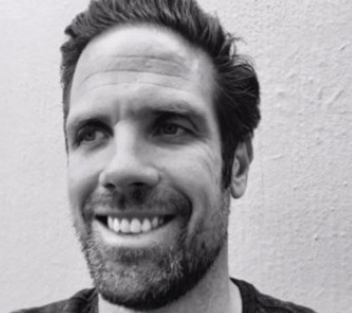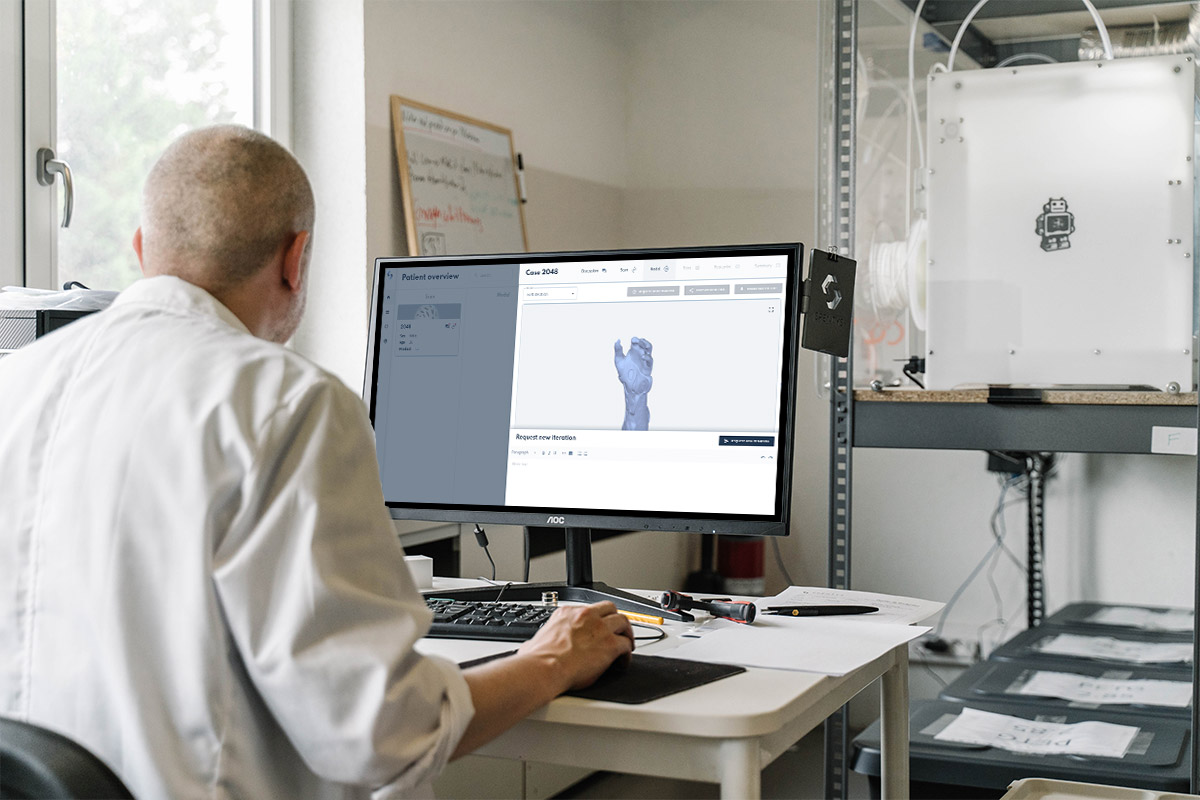The Future Is Digital
The orthotics and prosthetics sector is evolving rapidly, blending craftsmanship with digital tools that promise faster production, improved accuracy and sustainable growth. From AI-assisted modeling, scanning to 3D-printed orthoses, leading innovators are proving that embracing digital transformation enhances, not replaces, human expertise.
Spentys' Digitalization in O&P Report highlights how pioneers like Blatchford UK,HP, Ottobock, Bionic, and Formlabs are navigating this evolution, balancing longstanding expertise with emerging tools.
By cutting production time and designing more sustainable devices, these organizations are proving that innovation and patient care can progress hand in hand.
Blatchford UK: Where Craftsmanship Meets Software
Blatchford's journey captures the challenge many O&P providers face: integrating new technology without sacrificing quality.Operations Manager Nigel Birkett describes the company’s transition from plaster-based methods to computer-aided design and manufacturing (CAD/CAM):

"With 3D printing, you have a more consistent product – 3.2 mm is 3.2 mm," he shares.
This shift has not been without hurdles. The high cost of CAD/CAM manufacturing in the UK remains a barrier, especially when compared with NHS pricing. Still, Blatchford’s vision was clear: streamline the process from CAD to full 3D-printed production to reduce waste, improve margins, and achieve sustainability goals.
The environmental impact is already tangible. By replacing heavy plaster molds with digital scans, Blatchford reduced manual handling risks and waste, creating a more efficient and appealing workplace for the next generation of technicians.
HP: Scaling 3D Printing for Global Healthcare
For Ayelen Fernandez, HP’s O&P Segment Manager, the future lies in scalability and customization. HP views additive manufacturing (3D printing) as key to producing adaptive, patient-specific devices at lower cost and higher efficiency.

"I place a lot of emphasis on scalability, and additive manufacturing can help customers scale faster and more affordably," she says.
Fernandez emphasizes education and collaboration as essential to accelerating adoption. As outlined in the report, HP’s research demonstrates that digital workflows reduce human error, improve repeatability, and lower long-term production costs. The company also advocates for improved reimbursement structures to helpO&P clinics justify investment in 3D technology which ultimately expands collaboration while bridging the gap between clinics and manufacturers.
Ottobock: Data-Driven Design and the Rise of AI
Global leader Ottobock continues to set the benchmark for digital transformation in O&P. As Christian Käppel and Christian Kotter explain, their digital system Life Lounge unifies every stage, from 3D scanning, modeling and fabrication, into a streamlined, clinician-first workflow.


"Ultimately, our goal is to maintain a customer-centric approach, ensuring that our innovations directly address the needs of patients and customers," they share.
Ottobock’s focus is twofold: To empower clinicians through intuitive digital systems and to leverage data for better outcomes. The company shares how they are now training algorithms to assist clinical decision-making, demonstrating how artificial intelligence (AI) can reduce technician workload while improving patient rehabilitation. By blending AI, additive manufacturing, and simulation-based testing, Ottobock is moving toward a model where every orthosis or prosthesis is data-driven, sustainable, and precisely fitted.
Bionic: A Case Study in Gradual Digital Adoption
For Sagar Shetty, Director of Clinical Operations at Bionic Prosthetics & Orthotics Group, digital transformation is a marathon, not a sprint. His team adopted 3D printing incrementally, starting with a single printer and expanding to over 50 clinics across 12 U.S. states. Bionic believes that sustainable adoption means blending old and new.

"Better, simplified, consolidated software solutions will emerge that will allow practitioners to scan, rectify, design and slice to print a variety of device types on the same platform – it is already starting to happen.” Shetty explains.
Through their step-by-step approach, they’ve reached these transformation milestones:
Through this gradual adoption, Bionic has achieved measurable results. Today, around 90 percent of test sockets are digitally designed and printed.
Clinicians receive hands-on training that pairs digital rectification with traditional craftsmanship, helping them build confidence while maintaining accuracy. The team has also recorded significant reductions in turnaround time from scan to fitting, allowing patients to receive their devices faster without compromising quality.
By combining traditional expertise with digital workflows, Bionic has boosted productivity and shortened delivery timelines. These shifts have also improved morale among tech-savvy clinicians eager to modernize their practice.
Formlabs: Making 3D Printing Accessible for All
Shiden Yohannes, Medical Market Development Manager at Formlabs, sees training and resource availability as the largest barriers to 3D printing adoption in orthotics and prosthetics.
Even though lower equipment costs and access to scalable materials now allow smaller labs to compete with larger players, Yohannes explains that workforce training and reimbursement challenges still slow adoption.
He advocates for broader educational efforts and updated insurance codes that acknowledge additive manufacturing’s long term clinical and economic value.
For Yohannes, 3D printing represents a democratizing force within the O&P industry, one that enables smaller labs and clinics to deliver custom, high-quality devices with the same precision and efficiency once reserved for large-scale manufacturers.

"...by overcoming resource challenges, shifting perspectives, and advocating for expanded reimbursement, we can accelerate the adoption of 3D printing in orthotics and prosthetics, ultimately improving patient care and driving innovation within the industry." Yohannes concludes.
The Five Key Areas for Successful Digitalization
Across all interviews, five themes emerged as essential for successful digital transformation in O&P:

1. Cost Efficiency: Long-term savings outweigh initial investments through automation, reduced materials, and faster workflows.
2. Education: Training and clear communication are critical for adoption across multi-generational teams.
3. Sustainability: From waste reduction to recyclable materials, eco-conscious innovation is becoming a competitive advantage
4. Digital Workflows: Streamlined end-to-end systems reduce errors and enhance scalability.
5. External Support: Collaboration with technology partners and regulatory bodies accelerates progress.
Conclusion: Shaping the digital future of O&P
The digitalization of orthotics and prosthetics is accelerating globally. As Blatchford, HP, Ottobock, Bionic, and Formlabs show, innovation doesn’t erase tradition; it evolves from it.
Through embracing 3D printing and collaborative education, these leaders are shaping a data-driven, patient-centered future. From sustainable redesigns to AI ecosystems, they are reimagining patient care by turning digital data into life-changing, physical solutions.
Ready to modernize your O&P practice?
Request a demo with Spentys today.


The Future Is Digital

The orthotics and prosthetics sector is evolving rapidly, blending craftsmanship with digital tools that promise faster production, improved accuracy and sustainable growth. From AI-assisted modeling, scanning to 3D-printed orthoses, leading innovators are proving that embracing digital transformation enhances, not replaces, human expertise.
Spentys' Digitalization in O&P Report highlights how pioneers like Blatchford UK,HP, Ottobock, Bionic, and Formlabs are navigating this evolution, balancing longstanding expertise with emerging tools.
By cutting production time and designing more sustainable devices, these organizations are proving that innovation and patient care can progress hand in hand.
Blatchford UK: Where Craftsmanship Meets Software
Blatchford's journey captures the challenge many O&P providers face: integrating new technology without sacrificing quality.Operations Manager Nigel Birkett describes the company’s transition from plaster-based methods to computer-aided design and manufacturing (CAD/CAM):

"With 3D printing, you have a more consistent product – 3.2 mm is 3.2 mm," he shares.
This shift has not been without hurdles. The high cost of CAD/CAM manufacturing in the UK remains a barrier, especially when compared with NHS pricing. Still, Blatchford’s vision was clear: streamline the process from CAD to full 3D-printed production to reduce waste, improve margins, and achieve sustainability goals.
The environmental impact is already tangible. By replacing heavy plaster molds with digital scans, Blatchford reduced manual handling risks and waste, creating a more efficient and appealing workplace for the next generation of technicians.
HP: Scaling 3D Printing for Global Healthcare
For Ayelen Fernandez, HP’s O&P Segment Manager, the future lies in scalability and customization. HP views additive manufacturing (3D printing) as key to producing adaptive, patient-specific devices at lower cost and higher efficiency.

"I place a lot of emphasis on scalability, and additive manufacturing can help customers scale faster and more affordably," she says.
Fernandez emphasizes education and collaboration as essential to accelerating adoption. As outlined in the report, HP’s research demonstrates that digital workflows reduce human error, improve repeatability, and lower long-term production costs. The company also advocates for improved reimbursement structures to helpO&P clinics justify investment in 3D technology which ultimately expands collaboration while bridging the gap between clinics and manufacturers.
Ottobock: Data-Driven Design and the Rise of AI
Global leader Ottobock continues to set the benchmark for digital transformation in O&P. As Christian Käppel and Christian Kotter explain, their digital system Life Lounge unifies every stage, from 3D scanning, modeling and fabrication, into a streamlined, clinician-first workflow.


"Ultimately, our goal is to maintain a customer-centric approach, ensuring that our innovations directly address the needs of patients and customers," they share.
Ottobock’s focus is twofold: To empower clinicians through intuitive digital systems and to leverage data for better outcomes. The company shares how they are now training algorithms to assist clinical decision-making, demonstrating how artificial intelligence (AI) can reduce technician workload while improving patient rehabilitation. By blending AI, additive manufacturing, and simulation-based testing, Ottobock is moving toward a model where every orthosis or prosthesis is data-driven, sustainable, and precisely fitted.
Bionic: A Case Study in Gradual Digital Adoption
For Sagar Shetty, Director of Clinical Operations at Bionic Prosthetics & Orthotics Group, digital transformation is a marathon, not a sprint. His team adopted 3D printing incrementally, starting with a single printer and expanding to over 50 clinics across 12 U.S. states. Bionic believes that sustainable adoption means blending old and new.

"Better, simplified, consolidated software solutions will emerge that will allow practitioners to scan, rectify, design and slice to print a variety of device types on the same platform – it is already starting to happen.” Shetty explains.
Through their step-by-step approach, they’ve reached these transformation milestones:
Through this gradual adoption, Bionic has achieved measurable results. Today, around 90 percent of test sockets are digitally designed and printed.
Clinicians receive hands-on training that pairs digital rectification with traditional craftsmanship, helping them build confidence while maintaining accuracy. The team has also recorded significant reductions in turnaround time from scan to fitting, allowing patients to receive their devices faster without compromising quality.
By combining traditional expertise with digital workflows, Bionic has boosted productivity and shortened delivery timelines. These shifts have also improved morale among tech-savvy clinicians eager to modernize their practice.
Formlabs: Making 3D Printing Accessible for All
Shiden Yohannes, Medical Market Development Manager at Formlabs, sees training and resource availability as the largest barriers to 3D printing adoption in orthotics and prosthetics.
Even though lower equipment costs and access to scalable materials now allow smaller labs to compete with larger players, Yohannes explains that workforce training and reimbursement challenges still slow adoption.
He advocates for broader educational efforts and updated insurance codes that acknowledge additive manufacturing’s long term clinical and economic value.
For Yohannes, 3D printing represents a democratizing force within the O&P industry, one that enables smaller labs and clinics to deliver custom, high-quality devices with the same precision and efficiency once reserved for large-scale manufacturers.

"...by overcoming resource challenges, shifting perspectives, and advocating for expanded reimbursement, we can accelerate the adoption of 3D printing in orthotics and prosthetics, ultimately improving patient care and driving innovation within the industry." Yohannes concludes.
The Five Key Areas for Successful Digitalization
Across all interviews, five themes emerged as essential for successful digital transformation in O&P:

1. Cost Efficiency: Long-term savings outweigh initial investments through automation, reduced materials, and faster workflows.
2. Education: Training and clear communication are critical for adoption across multi-generational teams.
3. Sustainability: From waste reduction to recyclable materials, eco-conscious innovation is becoming a competitive advantage
4. Digital Workflows: Streamlined end-to-end systems reduce errors and enhance scalability.
5. External Support: Collaboration with technology partners and regulatory bodies accelerates progress.
Conclusion: Shaping the digital future of O&P
The digitalization of orthotics and prosthetics is accelerating globally. As Blatchford, HP, Ottobock, Bionic, and Formlabs show, innovation doesn’t erase tradition; it evolves from it.
Through embracing 3D printing and collaborative education, these leaders are shaping a data-driven, patient-centered future. From sustainable redesigns to AI ecosystems, they are reimagining patient care by turning digital data into life-changing, physical solutions.
Ready to modernize your O&P practice?
Request a demo with Spentys today.








